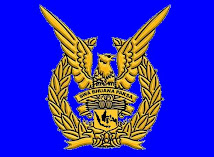"It is difficult to say what is impossible, for the dream of yesterday is the hope of today and reality of tomorrow."
— Robert Goddard, in E. M. Emme Introduction to the History of Rocket Technology, 1963~
50 Tahun Manusia Mengunjungi Antariksa
Presiden Indonesia Soekarno bersama angkasawan yang pertama Yuri Gagarin dan pemimpin-pemimpin Uni Sovet Nikita Khruchev dan Leonid Brezhnev di Kremlin (Moskow, Juni 1961)
Kosmonot Rusia Yuri Gagarin berhasil melakukan penerbangan pertama ke antariksa Rabu, 12 April 1961. Hari ini, 12 April 2011, tepat 50 tahun sudah momen bersejarah tersebut berlalu. Untuk memperingatinya, Pusat Ilmu Pengetahuan dan Kebudayaan Rusia menggelar pameran foto dan seminar bertema "50 Tahun Masa Eksplorasi Ruang Angkasa: Yuri Gagarin dan Indonesia."
Dalam pembukaan seminar, Duta Besar Rusia untuk Indonesia Alexander A. Ivanov Ph.D berbagi kenangannya tentang sosok Yuri Gagarin. Ia mengatakan, saat itu ia masih berusia 9 tahun saat Yuri Gagarin melakukan penerbangan. Meski demikian, Ivanov mengaku mengingat dengan jelas apa yang terjadi kala itu.
"Setelah Yuri terbang, orang-orang berkumpul di jalanan di Moskow, semuanya tersenyum dan tertawa," ungkapnya.Menurut Ivanov, keberhasilan Gagarin saat itu tak cuma membuat bahagia publik Rusia saja, tetapi juga dunia. Ia juga mengatakan bahwa keberhasilan Gagarin menandai semakin majunya peradaban manusia.
Dalam kesempatan itu, Ivanov juga menunjukkan beberapa foto yang dipasang di ruang Pusat Ilmu Pengetahuan dan Kebudayaan Rusia. Salah satu foto yang ditunjukkan adalah foto Presiden Soekarno berjejer dengan Yuri Gagarin.
Soekarno bertemu dengan Yuri Gagarin pada Juni 1961, hanya 2 bulan setelah penerbangan pertama ke antariksa itu. Soekarno juga bertemu dengan Sergei Korolyov, desainer Vostok 1, pesawat yang digunakan Gagarin.
Ivanov mengatakan, foto itu menandai dekatnya hubungan Rusia-Indonesia. Karenanya, ia berharap bangsa Indonesia juga mengenang hari ini sebagai peringatan kedekatan hubungan Indonesia-Rusia.
"Pada awal tahun 60-an, Rusia yang waktu itu merupakan Uni Soviet dan Indonesia membuat langkah bersama untuk mengembangkan Indonesia sebagai negara yang baru saja merdeka," ungkap Ivanov. Ia berharap, kerja sama antara Rusia dan Indonesia tetap berlanjut, termasuk dalam bidang antariksa.
Hal yang sama juga diungkapkan Direktur Pusat Ilmu Pengetahuan dan Kebudayaan Rusia, Yuri N Zozulya. Zozulya mengatakan, "Secara pribadi, impian saya pribadi, saya ingin mengirimkan kosmonot Indonesia untuk terbang menggunakan pesawat kami. Ini seperti yang kita lakukan dengan negara lain."
Kerja sama Indonesia-Rusia dalam bidang antariksa berlangsung dalam berbagai bentuk. Salah satunya adalah rencana proyek peluncuran roket antariksa dari Pulau Biak, Papua. Saat ini, rencana belum terwujud karena menunggu RUU Keantariksaan disahkan menjadi undang-undang.
Sumber: Kompas
Sumber: Kompas
























